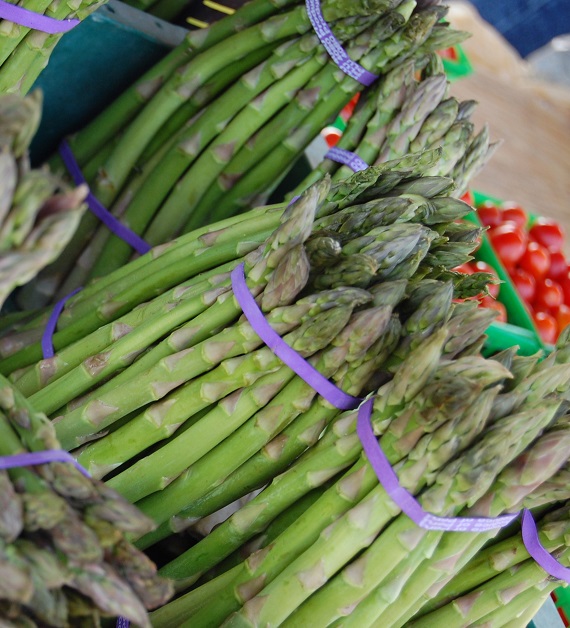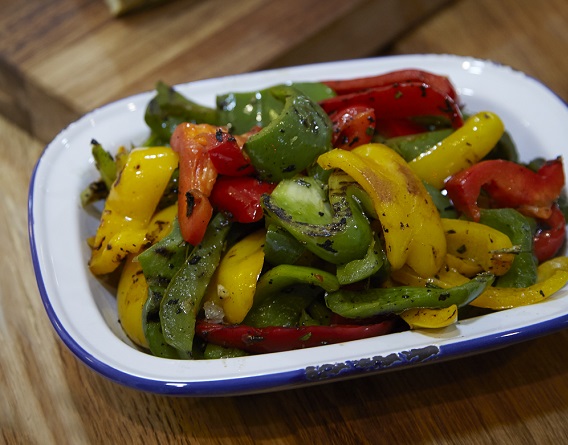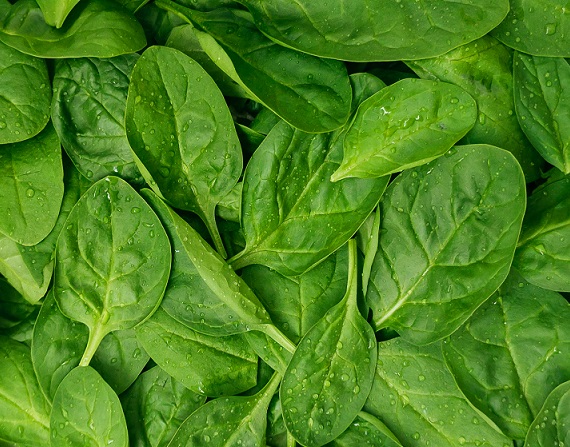Whether it`s fruit, vegetables, freshwater fish or seafood you fancy, eating what`s in season now can mean tasty, nutritious, sustainable and cost-effective choices.
This page will help you discover what to eat right now and what foods you can look forward to throughout the year.
May Seasonal Produce
Asparagus

A delicacy of the vegetable world, it has a short growing season and is only available April "“ June. Asparagus requires the soil in which it grows to be weed free and well drained, which means that water doesn`t run through the soil too quickly nor too fast, and there is no puddling of water. Interestingly it cannot be harvested the first year it is grown, or at least only a very few spears can be, and the same for the second year too. This is to allow the crop to strengthen and after the first two years the crop will be ready for harvesting, and will be ready year after year without having to be replanted.
This could go some way to explaining why it is considered such a luxury, and its price tag seeming expensive compared to other vegetables. It takes time for the crop to grow, and for farmers it will take 2 years before a full crop can be harvested!
They are simple to cook; steam or boil (preferably steam) for all of 3 minutes. Their ends can be woody and unpleasant to chew so don`t worry if you leave these to one side or chop them off prior to cooking. They are a delicacy eaten as they are, sometimes feature on breakfast plates alongside a hollandaise sauce - very delicious "“ or with pasta dishes or fillets of chicken and fish.
Asparagus is a source of folate and vitamin C, and it will retain even more of these water-soluble vitamins if it is steamed rather than boiled - because the vitamins are not lost to the water.
Asparagus fun fact: their plants are either male or female, and the male varieties produce more spears therefore are favoured over the female varieties.
Nectarines

A summery stone fruit that makes an appearance around springtime and is generally available all summer long. Nectarines can be confused with peaches as colour wise they are not too dissimilar however peaches are furry due to small hairs covering the skins surface whereas nectarines are smooth skinned. They are both grown in the same way though needing a sheltered, warm spot to grow and well-drained soil.
As with most fruit nectarines contain a lot of water and are very juicy, when the fruit feels slightly soft it is ready for eating. When they are more on the crunchy side still they feature excellently in salads, for example sliced nectarines, raw spinach, goats cheese rounds and chopped pecans.
Nutrition facts: a source of vitamin C and approximately 40kcal per fruit, depending on size.
They are also 89% water, and water found in foods all counts towards our daily fluid intake of 2 litres for women and 2.5 litres for men.
Peppers

Although peppers are a huge family of vegetables, the type that comes to mind are the sweet versions we so often buy, those that do not provide any spice. Interestingly red and green peppers are the same plant, for green they are picked when they are unripe hence their more bitter flavour, whilst the red are picked later and have had time to ripen and sweeten. This explains why you might sometimes see peppers tinged with both red and green. Whilst yellow and orange peppers are their own plants altogether.
Did you know that peppers contain more vitamin C than oranges? So much so that an 80g serving (1 of your 5 day) provides more than the daily Nutrient Reference Value (NRV). The NRV is 80mg and an 80g serving provides 100mg! The nutrient content of the different colours of bell peppers does vary slightly, however not significantly, so there`s no one pepper that is more nutrient dense than the other.
Spinach

This leafy green vegetable is seen differently by many, some perceive it to be a salad leaf, others stir it into sauces and curries and some deem it fit for a smoothie. Spinach is excellent used in all of these ways, its versatility is what makes it so great. If you do choose to cook it you can consider it a convenience food with its speedy cooking time, one minute of microwaving or two minutes of steaming.
When it comes to growing spinach to add to its versatility it is also available all year round. There are summer and winter varieties so if you can grow both then it will ensure a year round supply. Once the leaves are large enough, pick them straight away, alternating between plants. Naturally the soil quality will affect the taste of the leaves so ensuring the soil is rich and has been mixed with a generous amount of organic matter will prevent leaves tasting bitter.
Spinach is a source of iron, more specifically non-haem iron which is only found in plant foods, and also a source of calcium "“ it is not just your dairy products that provide you with calcium! Vitamin A is also found abundantly in spinach, which is important for eye health.
EAT THE SEASONS
What's best to eat in April?
Nothing tastes better than eating in season. Find out what's at its best in April.
 read more
read moreWhat's best to eat in June?
Nothing tastes better than eating in season. Find out what's at its best in June
 read more
read moreWhat's best to eat in July?
Nothing tastes better than eating in season. Find out what's at its best in July
 read more
read more